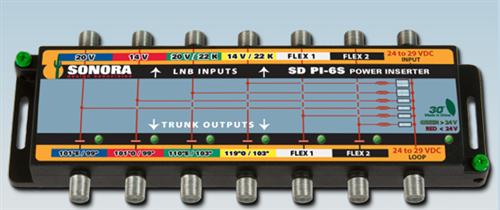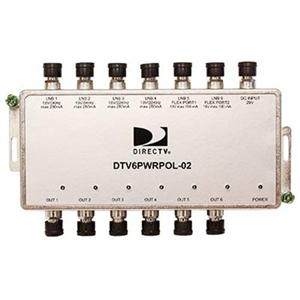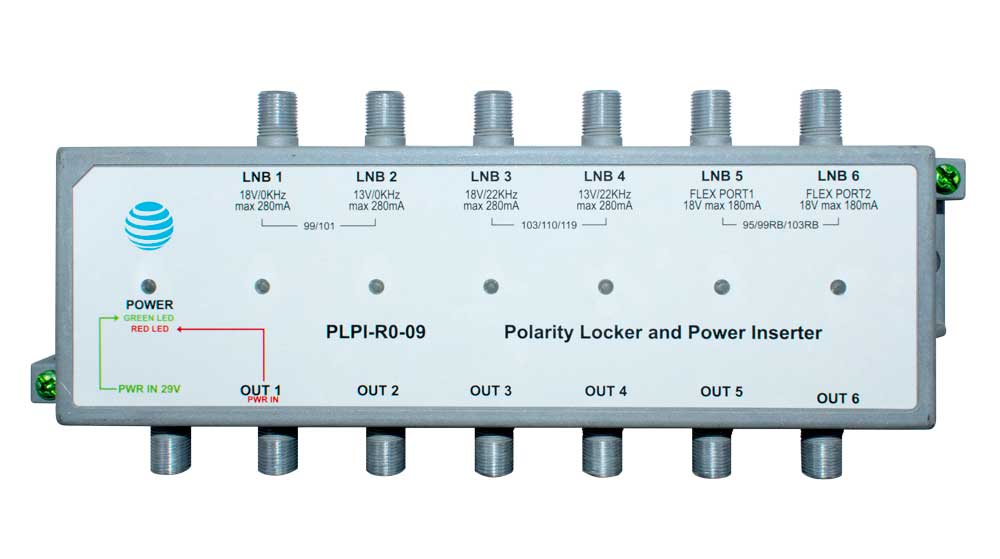This one goes out to the commercial installers. You’re out there every day putting in high-quality equipment that’s far above what the regular residential crowd needs. And while you need to have a good grasp of what the home-based install needs, you’re also expected to know everything about the big installs, the ones that only you can handle. Luckily, the Solid Signal Blog is here to help.
Let’s talk polarity lockers
Polarity lockers for satellite television have been around for decades. They’re one of the most common devices used in commercial satellite TV. Yet, they’re one on of the most misunderstood products on the market.
Polarity lockers came on the scene when satellite systems started to get complex. When your dish is providing one of six different kinds of signals, it’s important to get control of the situation. A polarity locker ensures that each cable puts out one and only one type of signal, consistently. This is critical for larger commercial installs.
In a traditional residential install, cables coming down from the dish will provide whichever signal is needed to meet customer demand. This makes the install simpler and more reliable. In the case where there is only one external multiswitch, the multiswitch itself acts as a polarity locker, requesting only one signal from each line.
The problem is that when you have two multiswitches, you can create some real issues. Unless the system is wired right, the multiswitches can compete and cause the signals on each line to change. When this happens, one multiswitch or the other will stop working right. Using a polarity locker helps you find wiring problems more quickly during the install phase and keeps all the signals flowing correctly.
The other purpose of a polarity locker is to provide power for the dish. In a residential installation, the multiswitch or receiver will power the dish which is fine for small installs. In large installs with a lot of cable, you want a clean, reliable source of power close to the dish. A polarity locker does the trick.
What’s the difference between polarity lockers?
There are three polarity lockers you’re likely to find out there in the market today. Two of them are basically identical, but only one of those two is made in 2022 and beyond. Let’s take a look
Sonora PI-6S

This is Sonora’s PI-6S power inserter. It’s been in use for well over a decade. This was the polarity locker of choice for commercial installs because of its small size and awesome reliability. This polarity locker will still work with four-line satellite installs, but will not work with today’s six-line satellite installs. It just wasn’t designed for them. Lines 5 and 6 were designed for international dishes to be including. Using it with today’s reverse band dish isn’t recommended, because it’s not reliable in that installation.
DIRECTV DTV6

In the mid-2010s, DIRECTV rolled out this polarity locker which was intended as a bridge between the older and newer generation. It’s designed to work with the international dishes, but it will also work with the newer reverse-bad dishes. As you can tell, this polarity locker has been around a while, judging by the old DIRECTV logo. It predates the AT&T days be a few years. It’s solid and reliable, and there’s no need to replace it if you find one on a customer site. There’s still some old stock available for this part as I write this article, but it’s not the most current. If you’re outfitting a new install, you’ll want to use the latest DIRECTV-approved product.
AT&T/Unitron PLPI

This is the one you should be using. The PLPI polarity locker is branded as an AT&T product but is now sold only for DIRECTV systems. It’s more compact than the DTV6 and more durable than the PI6S. It’s specifically designed around the reverse band dish, although it will work with the older international dish setups you sometimes find. Unlike earlier models, it has some flexibility on how it’s powered. You can power it through the OUT1 port, meaning that one power inserter can be used for the amplifier and polarity locker. The polarity locker is closer to the dish, so you would first power the amplifier and then feed power up through the OUT1 port.
Does it really matter?
In most cases, using either the DTV6 or PLPI will work for a modern install. However, the PLPI is the recommended part and is more likely to work with any changes that come in the future. But if you come across any of these polarity lockers in a commercial install that’s working properly, there’s no reason to tear it out and put in a newer model.





